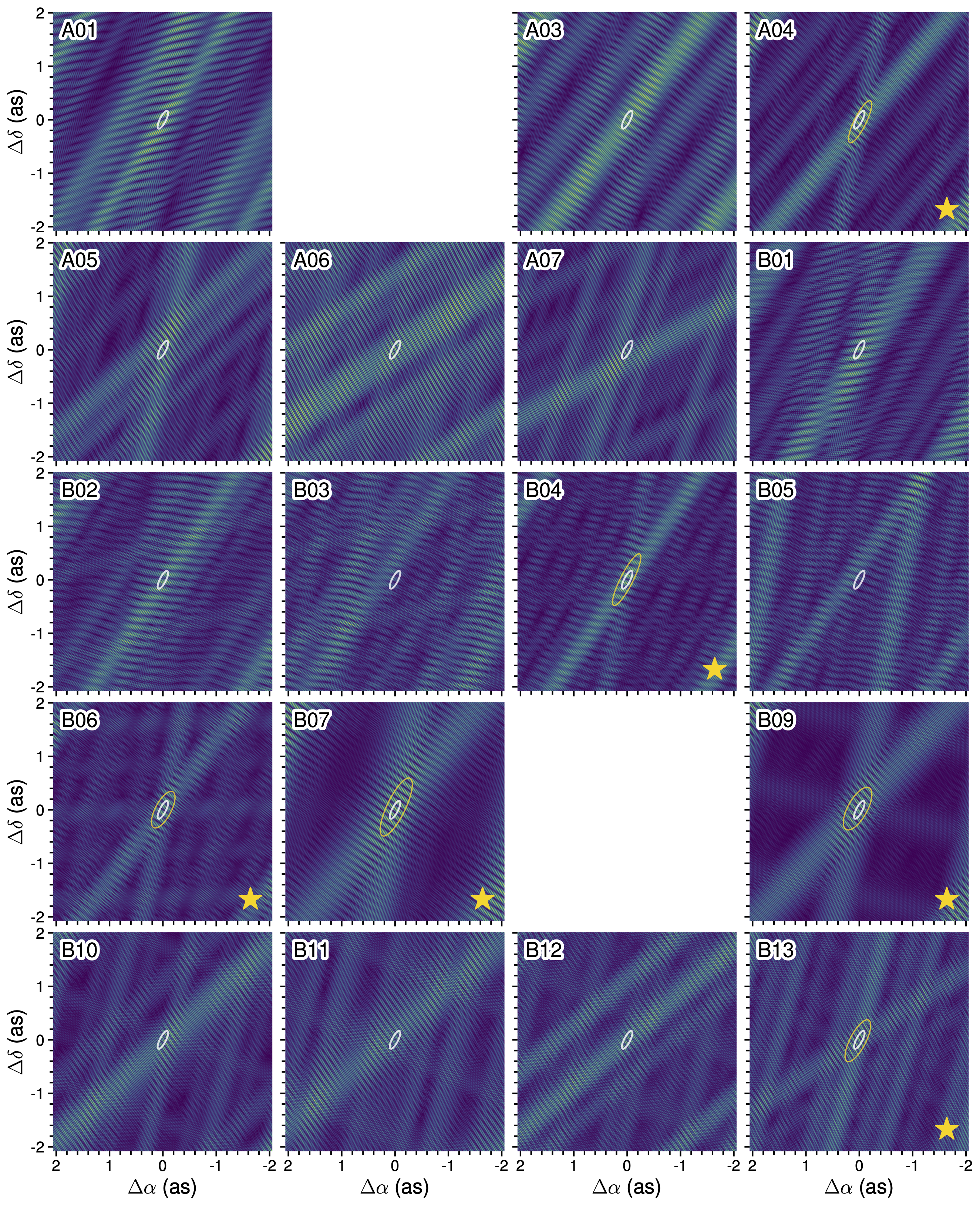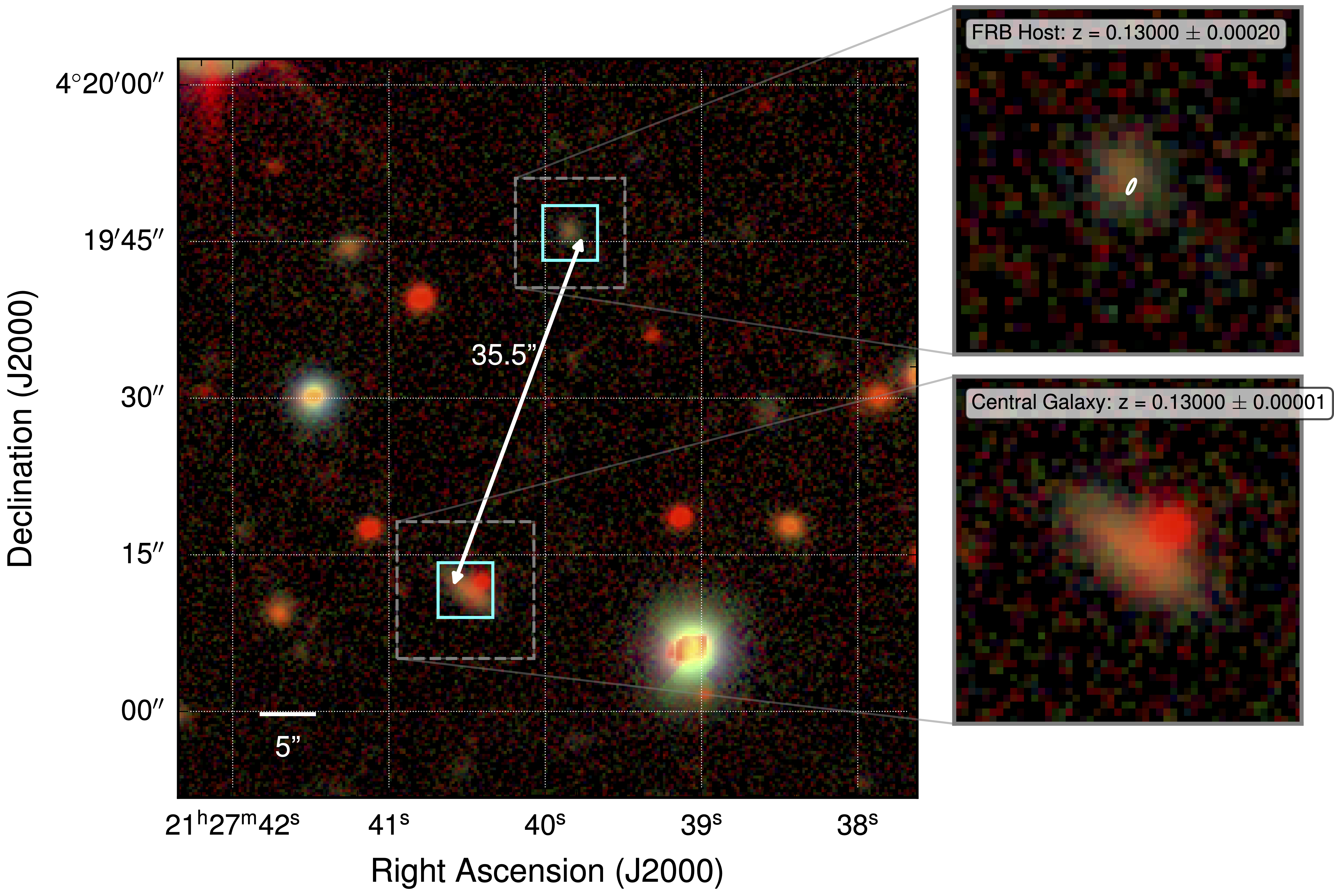
A hyperactive FRB pinpointed in an SMC-like satellite host galaxy
Mark P. Snelders Mohit Bhardwaj
Fast radio bursts (FRBs) are extragalactic radio flashes of unknown origin(s). They typically last on the order of a millisecond. A small fraction (~3%) of all FRBs have been observed to repeat. Our work is about the recently detected FRB 20240114A (thus detected on 2024 January 14), which is colloquially called a hyperactive repeater since thousands of bursts from this source are found the last year using multiple radio telescopes over the world. In our PRECISE programme (Pinpointing REpeating ChIme/FRB Sources with EVN dishes; PI: Franz Kirsten) we aimed to localize this source using the EVN to determine its host galaxy and, if possible, its local environment.
In two observation runs we managed to detect 20 bursts of this source. Usually this is more than enough to properly fill in the uv-plane and achieve a localization of the order of a couple of milliarcseconds. In this case however, we observed the source when it was as close to the sun as possible, just 18 degrees. Our ionospheric calibration was not perfect and hence we did not manage to stack the bursts ‘coherently’ (i.e., concatenating the calibrated visibilities before imaging). Instead, we image each burst separately and show the results in Figure 1. All the bursts that have a clear cross fringe pattern are fitted, individually, with a rotated 2-D gaussian (gold ellipses in Figure 1). To combine those results we multiply the probabilities on an individual pixel basis and those results are shown as white ellipses in Figure 1. In the end we achieve a localization of 30 x 90 milliarcseconds.

Figure 1. Each panel shows the absolute value of the dirty maps (i.e., the absolute value of the Fourier transform of the visibilities) for individual bursts. Bursts from Epoch 1 (EK056A/PR318A) are labelled An and bursts from Epoch 2 (EK056B/PR319A) are labelled Bn. The bursts are sorted on their arrival times. Bursts that pass the visual inspection (as indicated by gold stars) are fitted with a rotated 2-D Gaussian function, for which the 2-σ contour are shown as gold ellipses. The 2-σ region of the best combined position is shown as a white ellipse in all panels. Burst A02 was not found to be robustly astrophysical in origin and no calibration solution was found for B08. Consequently, these panels are left blank.
Optical spectroscopic follow-up observations with the gran telescopio canarias (GTC) revealed that the host of the FRB is a low-metallicity star-forming dwarf host at a spectroscopic redshift of z = 0.1300 and that the FRBs are offset by 0.5 kpc from the nucleus of its host. What is even more interesting is that nearby this host galaxy is a more massive spiral galaxy with the same redshift. These two galaxies are only separated by 35 arcseconds, which translated to a projected separation of just 85 kpc (Figure 2). Or, in other words, these galaxies are gravitationally bound to each other. This is the first time that an FRB source is localized to a satellite galaxy and the system in general is analogous to the Small Magellanic Cloud orbiting the Milky Way (but at a lower overall mass scale).
These results expands the known diversity of FRB host environments and offers important insights for interpreting seemingly “hostless” or highly offset FRBs. Hopefully, future space-based optical/infrared observations (e.g., with Hubble or James Webb Space Telescopes) will reveal the local environment of this FRB source and will fully leverage our precise radio localization.

Figure 2. Wide-field RGB view of the FRB 20240114A field using DESI g (blue), r (green), and z (red) band images. The FRB host galaxy at z = 0.1300, likely a satellite of a nearby central galaxy at the same systemic redshift, is marked with a cyan box along with its companion; their projected separation of 35.5 ′′ (85 kpc transverse distance) is marked by the double-headed arrow. Gray dashed boxes indicate the zoom regions shown in the upper (host) and lower (central galaxy) insets. In the host inset, the EVN-derived FRB position is highlighted by a white ellipse whose semi-axes represent the 10-σ localization uncertainty (inflated to be visible on this scale).
Link to the paper:
https://arxiv.org/abs/2506.11915
Contact:
Mark P. Snelders, ASTRON & Anton Pannekoek Institute for Astronomy, Amsterdam, NL. Email: snelders@astron.nl
Mohid Bhardwaj, Carnegie Mellon University: Pittsburgh, PA, US, work.mohitbhardwaj@gmail.com